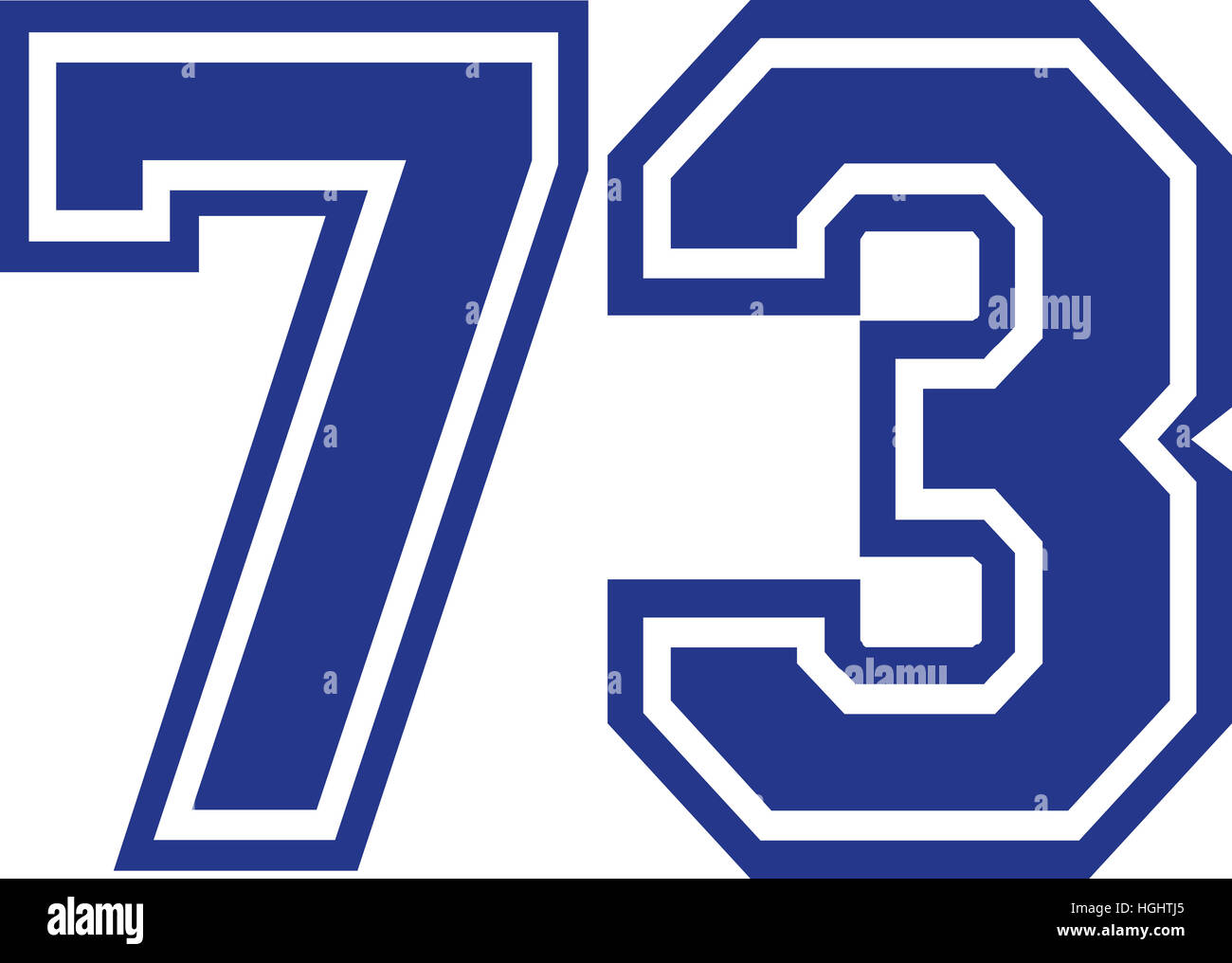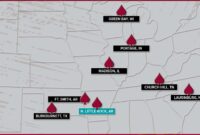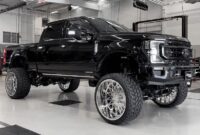73-79 Ford Trucks For Sale: Your Comprehensive Guide to Owning an American Icon sale.truckstrend.com
For many automotive enthusiasts and classic truck aficionados, the mention of "Ford trucks" instantly conjures images of the rugged, iconic F-Series models produced between 1973 and 1979. Often affectionately dubbed "Dentsides" by their admirers due to the distinctive body line running along their sides, these trucks represent a golden era of American automotive manufacturing. They are more than just old vehicles; they are tangible pieces of history, embodying durability, utility, and timeless style. Today, finding a 73-79 Ford truck for sale isn’t just about acquiring transportation; it’s about investing in a piece of Americana, embarking on a restoration project, or simply enjoying the unparalleled character of a classic workhorse. This guide will delve into everything you need to know about these sought-after trucks, from their enduring appeal to what to look for when making a purchase.
Why the 73-79 Ford F-Series Endures
73-79 Ford Trucks For Sale: Your Comprehensive Guide to Owning an American Icon
The sixth generation of the Ford F-Series pickups holds a special place in the hearts of many, and for good reason. Their continued popularity in the used market stems from a combination of design, engineering, and cultural impact:
- Classic Styling (The "Dentside" Aesthetic): The defining feature of these trucks is their distinctive body line, which starts just behind the front wheel well and runs cleanly down the side, often accentuated by trim. This, combined with the bold grille designs (which varied slightly by year), large headlights, and squared-off fenders, gives them an unmistakable and highly appealing vintage look that stands out in a sea of modern, aerodynamic vehicles.
- Robust Engineering and Durability: Ford built these trucks to last. They feature strong, full-perimeter frames, heavy-duty suspension components, and a range of proven powertrains. Many original examples, even after decades of use, still run reliably, a testament to their inherent ruggedness and straightforward mechanical design.
- Versatility as a Workhorse and Custom Platform: Whether it was hauling hay, towing trailers, or serving as a daily driver, these trucks excelled at hard work. This utilitarian foundation makes them incredibly versatile for modern use, from being reliable weekend cruisers to serving as blank canvases for elaborate custom builds, restomods, or off-road rigs.
- Nostalgia and Pop Culture Icon Status: For many, these trucks evoke strong feelings of nostalgia, reminding them of simpler times, family road trips, or the vehicles their fathers and grandfathers drove. Their frequent appearance in movies, TV shows, and music videos further solidifies their status as cultural icons.
- Excellent Parts Availability: One of the most significant advantages of owning a 73-79 Ford F-Series is the readily available parts. Thanks to their widespread production and enduring popularity, both original equipment (OE) and aftermarket components are relatively easy to find, making maintenance, repairs, and restorations significantly less daunting than with other classic vehicles.

Key Models and Configurations to Look For
The 73-79 F-Series offered a dizzying array of models and configurations, catering to a wide range of needs and budgets. Understanding these variations is crucial when searching for a truck:
- Models:
- F-100/F-150: The most common light-duty models. The F-150 was introduced in 1975 to bridge the gap between the F-100 and F-250, often exempt from certain emissions regulations, making it a popular choice.
- F-250: A 3/4-ton heavy-duty truck, known for its increased payload and towing capacity. Often equipped with stronger axles and suspension.
- F-350: The 1-ton model, designed for the heaviest loads and towing. These are less common but highly sought after for serious work or heavy-duty builds.
- Body Styles:
- Regular Cab: The classic single-row seating configuration, most common.
- SuperCab: Introduced in 1974, offering extended cab space behind the front seats, often with jump seats or a bench, accessible via a small third door on the passenger side (or two small doors in later years).
- Crew Cab: The rarest and most desirable, offering four full doors and a full rear bench seat, making them excellent family haulers or custom project foundations.
- Bed Lengths: Available in short bed (approx. 6.5 ft) and long bed (approx. 8 ft) configurations. Short beds are often preferred for aesthetics and maneuverability, while long beds offer maximum utility.
- Drivetrain: Both 2-wheel drive (4×2) and 4-wheel drive (4×4) versions were available. 4×4 models are generally more expensive due to their off-road capability and desirability.
- Trim Levels: Ford offered various trim levels, from the basic Custom to the more luxurious Ranger, Ranger XLT, and Lariat. Special editions like the "Free Wheeling" package (with vibrant stripes and unique interiors) are also collectible.
- Engines: A wide range of engines powered these trucks:
- Six-Cylinders: The inline-six 300 cubic inch (4.9L) was a legendary workhorse, known for its incredible torque and reliability. The 240ci was also offered in earlier years.
- Small Block V8s: 302 cubic inch (5.0L) and 351 cubic inch (5.8L) (Windsor or Modified) offered a balance of power and efficiency.
- Big Block V8s: 360, 390 (FE series, mostly pre-77), 400 (Modified), and the powerful 460 cubic inch (7.5L) for heavy-duty applications.
- Transmissions: Manual options included 3-speed and 4-speed (NP435, T18), while automatics included the C4 (lighter duty) and the robust C6 (heavy-duty).
What to Inspect Before Buying
When looking at 73-79 Ford trucks for sale, a thorough inspection is paramount. These trucks are old, and even the best examples will have some wear.
- Rust: This is the biggest enemy. Check:
- Cab Corners and Rocker Panels: Common areas for rust to form.
- Floor Pans: Under the carpet/mat, especially around the footwells.
- Fenders: Inner and outer wheel wells.
- Bed: Floor, wheel wells, and bed sides.
- Frame: Critically important. Look for deep pitting, cracks, or repairs. Pay attention to spring hangers and body mounts.
- Radiator Support: Prone to rust.
- Engine and Drivetrain:
- Cold Start: Listen for knocking, excessive smoke (blue for oil, white for coolant, black for rich fuel).
- Leaks: Check under the truck for oil, transmission fluid, power steering fluid, or coolant.
- Transmission: Smooth shifting (automatic), no grinding (manual). Check clutch feel.
- Differentials/Transfer Case (4×4): Check for leaks and proper engagement.
- Brakes and Suspension:
- Brake Pedal Feel: Spongy or hard pedal?
- Steering Play: Excessive looseness in the steering wheel.
- Suspension Components: Worn bushings, shocks, leaf springs.
- Electrical: Test all lights, gauges, wipers, heater fan, and radio. Look for frayed or aftermarket wiring.
- Interior: Dash cracks, torn seats, worn door panels, missing trim. These are often fixable but factor into cost.
- Documentation: A clear title is essential. Service records, if available, are a huge bonus.
- Test Drive: Listen for unusual noises, check alignment, and assess overall drivability.
Understanding the Market: Pricing and Value
The market for 73-79 Ford trucks is vibrant but highly variable. Prices are influenced by several key factors:
- Condition: This is the primary determinant. A fully restored, show-quality truck will command top dollar, while a rust-riddled project will be significantly cheaper.
- Rarity: Crew Cabs and SuperCabs, especially 4×4 versions, are rarer and fetch higher prices. Certain engine/transmission combinations can also add value.
- Originality vs. Customization: Original, well-preserved examples can be highly valued by collectors. However, well-executed restomods or custom builds can also command high prices, often reflecting the significant investment made.
- Location: Prices can vary regionally based on demand and climate (less rust in dry climates).
- Engine/Drivetrain: Generally, 4x4s are more expensive than 2WDs. Big block V8s and the reliable 300 inline-six tend to be desirable.
It’s crucial to set realistic expectations. A cheap truck will almost certainly require significant investment in repairs and restoration. A "driver" quality truck might be ready to use but will have cosmetic flaws and likely need ongoing maintenance.
Where to Find 73-79 Ford Trucks For Sale
- Online Marketplaces: Craigslist, Facebook Marketplace, eBay Motors are excellent starting points. Use specific keywords like "Ford F-150 1977" or "Dentside Ford truck."
- Specialized Forums and Websites: Classic truck forums, dedicated Ford truck enthusiast sites, and classic car listing sites (e.g., Hemmings, ClassicCars.com) often have trucks listed by knowledgeable sellers.
- Auctions: For higher-end, restored examples, major automotive auctions like Barrett-Jackson or Mecum Auctions can be a source, though prices will be premium. Local auctions can also yield finds.
- Local Dealerships and Private Sellers: Keep an eye out in your local area. Sometimes the best deals are found through word-of-mouth or "for sale" signs.
- Barn Finds/Estate Sales: For the adventurous buyer willing to take on a significant project, these can be rewarding.
Restoration, Customization, and Daily Driving
Owning a 73-79 Ford truck opens up a world of possibilities:
- Restoration: Many owners choose to restore these trucks to original or near-original condition. This involves bodywork, paint, interior refurbishment, and mechanical overhauls.
- Customization (Restomods): A popular trend is "restomodding," which involves retaining the classic exterior while upgrading the powertrain (e.g., modern Coyote engine swap), suspension, brakes, and adding modern amenities like air conditioning, power steering, and better sound systems.
- Daily Driving: With proper maintenance and potentially some upgrades (like electronic ignition, power brakes/steering), these trucks can be reliable daily drivers. Be mindful of fuel economy (often in the single digits for V8s) and the lack of modern safety features.
Practical Advice and Actionable Insights
- Define Your Purpose and Budget: Are you looking for a show truck, a reliable driver, or a long-term project? This will dictate your budget and the type of truck you should pursue.
- Do Your Research: Understand the different models, engines, and common issues for the specific year you’re interested in. VIN decoders can help verify originality.
- Inspect Thoroughly (or Hire an Expert): If you’re not mechanically inclined, pay for a pre-purchase inspection from a trusted mechanic familiar with classic vehicles.
- Factor in Post-Purchase Costs: Beyond the sale price, budget for registration, insurance, immediate repairs, and potential upgrades.
- Be Patient: The right truck might not appear overnight. Don’t rush into a purchase.
73-79 Ford Trucks For Sale: Estimated Price Guide
Please note: These prices are estimates and can vary wildly based on specific year, engine, transmission, trim, location, and the overall quality of the example. This table serves as a general guideline.
| Condition Category | F-100/F-150 2WD (Regular Cab, Short/Long Bed) | F-150 4×4 (Regular Cab, Short/Long Bed) | F-250/F-350 4×4 (Regular Cab) | SuperCab/Crew Cab (All Drivetrains) |
|---|---|---|---|---|
| Project Truck (Rough, Needs Major Work) | $1,500 – $5,000 | $3,000 – $8,000 | $2,500 – $7,000 | $4,000 – $12,000 |
| Driver Quality (Runs, Drives, Needs TLC) | $6,000 – $15,000 | $10,000 – $25,000 | $8,000 – $20,000 | $15,000 – $35,000 |
| Good Condition (Solid, Minor Flaws) | $16,000 – $30,000 | $26,000 – $45,000 | $22,000 – $40,000 | $36,000 – $60,000+ |
| Excellent/Restored (Show Quality) | $30,000 – $60,000+ | $45,000 – $80,000+ | $40,000 – $75,000+ | $60,000 – $100,000+ |
Frequently Asked Questions (FAQ)
Q: What years are considered "Dentside" Ford trucks?
A: The term "Dentside" specifically refers to the sixth generation of the Ford F-Series trucks, produced from 1973 to 1979.
Q: Are parts readily available for 73-79 Ford trucks?
A: Yes, one of the major advantages of these trucks is the excellent availability of both new aftermarket and used/NOS (New Old Stock) parts, making them relatively easy to maintain and restore.
Q: What are the most common rust spots to check on these trucks?
A: Common rust areas include cab corners, rocker panels, floor pans, inner and outer fender wells, the bed floor and sides, and the radiator support. Always check the frame for structural integrity.
Q: Which engine is considered the most reliable or desirable?
A: The 300 cubic inch (4.9L) inline-six is legendary for its bulletproof reliability and torque. Among V8s, the 302 and 351W are generally well-regarded, while the 460 offers immense power. Reliability often depends more on past maintenance than inherent design.
Q: Can a 73-79 Ford truck be a reliable daily driver?
A: Yes, with proper maintenance and potentially some modern upgrades (e.g., electronic ignition, upgraded brakes/suspension), they can be reliable. However, be prepared for lower fuel economy and the absence of modern safety features and conveniences.
Q: What’s the difference between an F-100 and an F-150?
A: The F-150 was introduced in 1975, primarily to bridge the gap between the F-100 and F-250 and to skirt new emissions regulations that applied to light-duty trucks (F-100s). F-150s typically had slightly higher GVWRs (Gross Vehicle Weight Ratings) than F-100s, classifying them differently for emissions and sometimes for insurance.
Q: How much should I expect to pay for a project truck?
A: A true "project" truck (meaning it needs significant bodywork, mechanical repairs, and likely won’t run/drive reliably) can range from $1,500 to $8,000, depending on the model, completeness, and extent of rust. Be prepared to invest significantly more in restoration.
Conclusion
The 73-79 Ford F-Series trucks stand as a testament to American automotive engineering and design, offering a blend of rugged utility, timeless aesthetics, and a deep well of nostalgia. Whether you’re seeking a robust workhorse, a canvas for a custom build, or a cherished classic to enjoy on weekend cruises, these "Dentside" Fords present an compelling opportunity. With careful inspection, a clear understanding of the market, and a passion for these enduring icons, finding and owning a 73-79 Ford truck can be a truly rewarding experience, allowing you to drive a piece of history that continues to capture hearts across generations.



